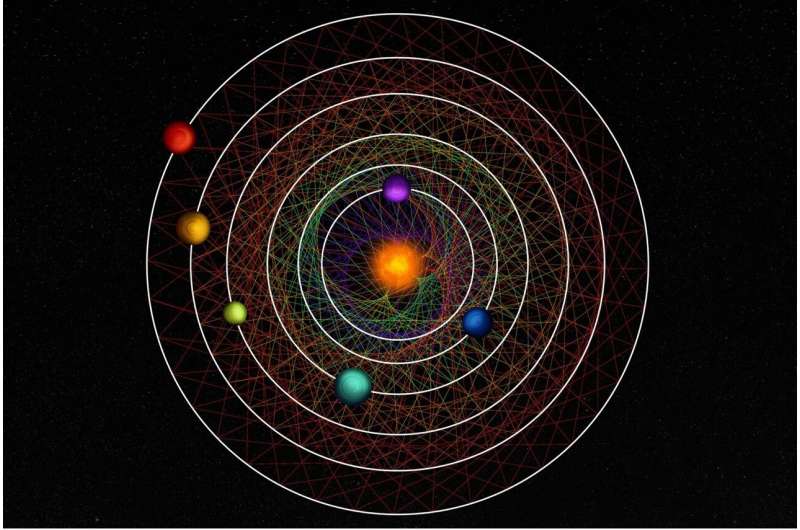Rare Six-Planet System Uncovered: Remarkable Synchrony Observed

November 29, 2023
The editorial process and policies of Science X have been employed for scrutiny of this article. The editors have ensured the credibility of the article by emphasizing the following attributes:
- fact-checked
- peer-reviewed publication
- trusted source
- proofread
University of Chicago
A neighboring star system has revealed a unique celestial scene to scientists: a group of six planets orbiting their principal star in a harmonious manner, repeating a pattern that could easily be related to music.
This special case of synchronized gravitational interplay could be a portal for valuable revelations about the birth and evolvement of planets.
The study, spearheaded by Rafael Luque of UChicago, was featured in Nature on November 29.
Luque emphasized that this groundbreaking finding would serve as a yardstick to understand the formation and evolution of sub-Neptunes, which are very common in the galaxy beyond our solar system, identifying their material composition and whether they generate conditions conducive for the existence of surface water.
The star system harboring the six planets is known as HD110067, located approximately 100 light years away in the northern constellation of Coma Berenices.
NASA's Transiting Exoplanet Survey Satellite (TESS) in 2020 spotted variations in the star's luminosity suggesting the presence of planets orbiting it. This finding, in combination with data from the European Space Agency's CHaracterizing ExOPlanet Satellite (Cheops), was analyzed by a research group resulting in the identification of a never-seen-before arrangement.
The phenomenon of multiline planets is quite a common occurrence in our galaxy, however, finding them in an orchestrated gravitational framework, called 'resonance', is quite rare.
In this particular case, the planet closest to the star completes three orbits as the next planet completes two—a ratio known as 3/2 resonance. This sequence is replicated for the four nearest planets. The external planets exhibit a pattern of four orbits for every three of the next planet which is known as a 4/3 resonance, made twice over.
The scientists add that these resonant orbits have been consistent over the billions of years since the inception of the system, without a slight deviation.
Orbitally resonant systems are pivotal to our understanding of planets' formation and evolution. The orbital resonance might be initially observed at the time of formation but could be easily disrupted by several events namely a heavy planet, nearby stars or large impact incidents.
This explains why most of the discovered multi-planet systems are probably deviating from their initial resonance. Yet, systems maintaining their resonance are much scarce.
Luque adds that about only one percent of systems manage to stay in resonance and an even smaller fraction display a string of planets with such configuration. HD110067 thus stands special and calls for further exploration as it presents the raw and preserved configuration of a planetary system.
To unfold more about this system, there is a requirement for accurate readings of the masses and orbits of these planets.
Journal Information: Nature
The report is brought to you by The University of Chicago




